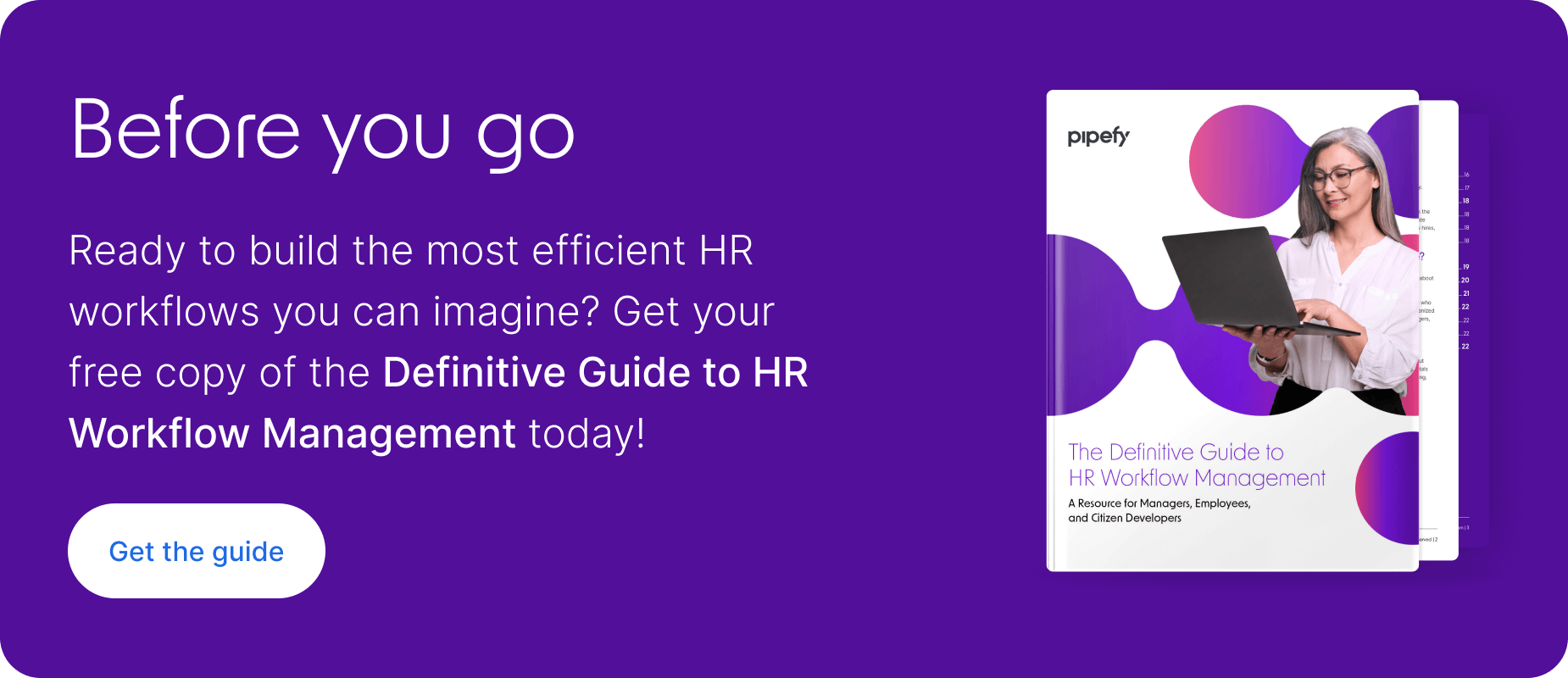ARTICLE SUMMARY
Performance starts where your employees work. To get your people working at their highest potential, you need to build a culture where all team members set goals for themselves and track their progress toward those goals. So that happens, Agile and HR tools should be adopted. They will not only optimize your performance management, but will also save you time, money and will help you keep closer track of your employees.

Much depends on your ability to manage your employees’ performance. Top-performing employees are more valuable to their employers and colleagues—up to three times more valuable, according to a study conducted by VitalSmarts.
While not everyone can be at the top, everyone does have the power to reach their highest potential. With these performance management tools, you can help your teams to step up their game.
Performance Management Tools for Department Heads
Performance starts where your employees work. To get your people working at their highest potential, you need to build a culture where all team members set goals for themselves and track their progress toward those goals.
Agile Goals
KPIs and performance metrics are important things for your company to track, but they don’t necessarily motivate employees. To feel connected to business outcomes, your people need goals to work toward.
Research shows that when people set and pursue goals, they develop personal connections to the target outcome. The mind associates goal achievement with an ideal future self and the person setting the goal stays focused on that future self until it becomes a reality. They see the goal as a destination, to be reached despite temporary setbacks or the ever-present temptation to “slack off.”
That being said, some goals are more motivating than others. If something seems too out of reach or irrelevant to the employee’s value set, the employee won’t internalize it. Most importantly, the goal has to be SMART:

The employee should be able to track progress toward the goal and feel that they can attain it.
Not only that, but effective goals are also flexible and agile. Managers should be able to touch base with employees and discuss what goals are current priorities, based on business circumstances. Employees and managers need to be ready to shift goals as those circumstances dictate.
If you’re Head of Marketing, in this guide you can read more about SMART and other tools to build a more structured and creative team.
Performance Coaching
Executive coaching has been popular among business leaders for years. Now, businesses are starting to apply it as a performance management tool for employees at all levels. These days, you’re also likely to hear it called “performance coaching” or “business coaching.”
Performance coaches work like tutors. They start by assessing the strengths and weaknesses of the person who will be receiving the coaching. Then, drawing on an understanding of the person’s work, the coach provides guidance and suggestions to help them improve.
Coaching is most effective when it’s an integrated part of a company’s culture. A coaching culture values growth and honors experience. It welcomes constructive feedback.
There are several ways to implement coaching as one of your performance management tools. Some companies make coaching one of a manager’s responsibilities in terms of employee development, while others bring in third parties. Many coaches work in person, but some companies work better with options for virtual and even automated coaching.
Performance Management Tools in HR
Your company’s Human Resources department also has a role to play in performance management.
Because HR is where most companies keep records of an employee’s history with the company, it can play an important role in performance management. By incorporating performance record-keeping into its regular activities, an HR department can make sure departments and employees stay on track.

Talent Management Systems
A talent management system is an integrated tool that helps you to manage the entire employee lifecycle in one convenient place. If you’re already using one, find out if there’s a way for managers to enter performance data and track employees’ progress.
By centralizing performance information for all employees, HR can calculate average performance levels and make note of outliers. Also, when HR can collect and analyze performance data, the company can provide personalized training materials as needed.
Make sure to set up your system as a connected and integrated tool, accessible to managers in other departments, and set automated reminders so that performance data stays up to date. If your system doesn’t provide these capabilities, get one that does.
Performance Appraisal Tracking
Performance appraisal tracking can work as a stand-alone tool, but it’s most effective as part of a broader talent management platform. Either way, it formalizes the assessment and feedback system, providing standard evaluation techniques so that trends in performance are easier to see.
Centralizing performance appraisal in HR allows your company to use the same method of measurement across the board. Look for a method that focuses on the employee’s achievements and capabilities for future success, considering both hard skills and the person’s fit with company culture.
- The Human Resource Accounting Method: compares the cost of hiring and training an employee to the amount of revenue the employee brings in
- Management by Objectives: measures performance against employee-specific goals
- The Assessment Center Method: assesses employee potential for job performance and team membership
- The 360-degree Appraisal: combines evaluations from an employee’s managers and co-workers
- The Behaviorally Anchored Rating Scale: pinpoints the behaviors required of an employee and how their performance compares to those requirements
Using any of these methods, a Human Resources team can evaluate each employee’s performance based on their suitability for the role. There’s enough specificity to distinguish high performers from low performers, and enough individuation to avoid unfair comparison.
As performance management tools in HR, these assessment methods power a comprehensive view of a workforce’s potential and how well they meet that potential.
Employee Feedback Surveys
Performance management isn’t just for lower-level employees. Managers also need to hear how they’re doing, and not just because feedback helps them to be better at their work. According to a study recently quoted in The Guardian, 99% of surveyed employees would stay longer at a company that welcomes and acts on their feedback, but 67% said that their companies were “OK” or “horrible” at doing so.

Many performance management tools in HR can collect and aggregate feedback from employees. Some you need to use in isolation, but others can integrate with systems that you already use.
HR departments also have the option to create surveys from scratch through online forms. You may choose to go this route if your process management software already has a survey function that feeds into a database.
Performance Management Tools for Small Business
Not all performance management tools require enterprise-level resources. Some are better suited to companies with fewer resources, geared as they are to scalability.
Routine Individual Feedback Meetings
People want feedback and they want it often. According to a 2019 Joblist survey:
- 33.4% of employees would like more feedback from their managers
- Frequent feedback—three or more times per month—is associated with higher levels of motivation
- 59.3% of workers who receive frequent informal feedback are very or extremely motivated
Almost half of people responsible for giving feedback on the job say they’ve held back on constructive commentary due to discomfort, but statistics show that they don’t have to. Between 59% and 62% of employees are proactive and curious when receiving feedback. They ask questions, ask for suggestions on how to improve and act on those suggestions.
Not everyone responds well to public feedback, however, and this is where small companies are at an advantage. When a business has fewer staff members, managers often have the chance to get to know their employees better. That means more detailed feedback and a greater opportunity to offer informal feedback in passing or in private.
Smaller companies are also better-positioned to shift their culture to make way for compassionate direct feedback. When you have a smaller cohort of managers, you can more easily train them to give useful feedback.
It’s also easier for managers and executives in smaller companies to keep track of feedback patterns and manage overall performance based on individual conversations. That said, if you start your business with this kind of culture, it’s more likely to stick as the company scales.
Scalable HR Databases
It’s easy to keep track of your employees’ performance when you’re a startup with a tiny team. Even antiquated methods like spreadsheets and chains of emailed feedback are manageable when you only have a handful of employees. The trouble is, when you start to scale, things get complicated.
Databases rank among the most useful performance management tools for small businesses. Databases keep all of your company’s information in one place so that no matter how big you grow, you still know where to find up-to-date performance information for your staff.
Some databases, like Pipefy’s, even help you to keep information updated. You can program the database to send automated reminders when the most recent performance report has passed a certain age or when an employee has a feedback session coming up.
The Takeaway
The more you know about your employees’ performance, the more prepared you are to offer relevant training and development opportunities. To get to that point, you need performance data that is currently and easily accessible, combined with a culture that values growth opportunities.
Performance management tools are your first step. Look for a method that provides you with a central resource for all employee performance data, as well as tools to help you analyze and communicate that data. Start optimizing your team’s performance today and watch your revenue grow.










